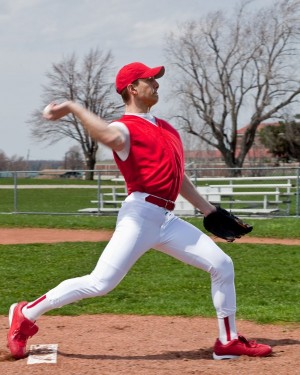 Opening Day for Major League Baseball has arrived! Hopefully your favorite team can stay healthy and challenge for a postseason birth this season. Medical science can’t help your cleanup batter hit a curveball, but it may soon help your best pitcher avoid an injury.
Opening Day for Major League Baseball has arrived! Hopefully your favorite team can stay healthy and challenge for a postseason birth this season. Medical science can’t help your cleanup batter hit a curveball, but it may soon help your best pitcher avoid an injury.
According to Dr. Glenn Fleisig, a biomedical engineer at the American Sports Medicine Institute, the technology is already here, albeit in its infancy. Using sensors and computerized technology, Dr. Fleisig said baseball biometrics can help prevent arm and elbow injuries in pitchers.
“It’s the next sabermetrics,” said Dr. Freisig. “It’s science and the competitive advantage of knowing what your players are doing vs. other people not knowing what their players are doing.”
Motion Capture Technology Preventing Injuries
Interestingly, the motion capture technology has its roots in the video game industry. Motus Global, the company that has developed a five-sensor and single-sensor motion capture arm sleeve, first launched after developing the motion capture technology used in the Grand Theft Auto III and IV video games. The sensored-sleeves measure a variety of different data sets, but MLB folks are most interested in measuring valgus torque – also known as stress on the elbow. This can help doctors determine if a pitcher is at risk for ulnar collateral ligament injuries or Tommy John surgery.
According to Motus Global, 27 of the 30 major league baseball teams are already using the technology, but major league baseball has banned the sensors for use during games. Players can wear them during workouts or during bullpen sessions, but for now, in-game use is prohibited. Interestingly, it’s the player’s union who does not want teams to have access to the in-game information, as they believe it could be used against them during contract negotiations.
“The union, without some negotiation, would never let the teams have that information,” said Toronto pitcher R.A. Dickey, a former NL Cy Young Award winner, “because they would use it in arbitration, they’d use it in contract negotiations. I would, too, if I was an owner or a team.”
The 9-millimeter, 7-ounce model is quite the technological feat. The five sensors are equipped to a pitchers elbow, biceps, chest, belly button and lead foot. Using bluetooth technology, arm and movement data can be transmitted nine seconds after a pitch is thrown, or the information can be downloaded as needed, like after a bullpen session, an inning or after a game.
“One of the major goals of our system is to measure workload on the UCL, the Tommy John ligament, and that’s meant to be worn every day, the moment a player steps on the field till the moment they step off,” said Ben Hansen, Motus’ chief technology officer. “What we’re seeing now is we have 18 months of what a Major League Baseball pitcher’s throwing regimen looks like, and it’s fascinating to see this data. We hope players continue to wear it and we see what their workloads are throughout a career and what workloads lead to injury. That’s our ultimate goal.”